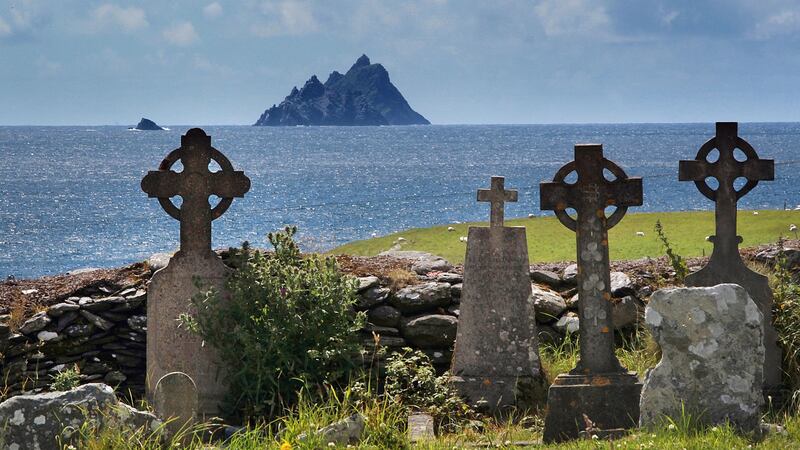Down the centuries, the ancient diocese of Ardfert has been associated with early saints such as Brendan the Navigator, Erc, Carthage Mochuda, and Fionán Cam. Today, however, the future brings earthly challenges.
Five of its 53 parishes are now without a resident priest. Just one priest will be ordained next year – the first in a decade. Just one priest in the sprawling diocese, which includes Kerry and parts of west and north Cork, is under 40 years of age.
Three priests who retired last year did so only after they had passed the age of 75. One equally elderly colleague has retired this year. Three of the diocese’s priests are coping with serious illnesses.

Priestless parishes are now being served by neighbouring ones, like the deaneries of older times. It means that “no priest is full-time in his own parish” the Bishop of Kerry, Dr Ray Browne said recently.
Valentia Island in the south west, Allihies in west Cork, Tarbert in the extreme north of Kerry, have all been without priests for a year or more, while the parishes of Ballyheigue and Duagh are also without resident priests.
The shortages have been heralded for a long time. The diocese's pastoral director Fr Ger Godley, who is managing ever-shrinking resources, says growing numbers of parishes have been pared back. In Dingle, Kenmare, Killorglin, "it's just one man", he says.
Currently, the diocese has 51 priests for its 53 parishes. Increasingly, priests will be deployed to cover four or five parishes, with the laity taking on more and more of the work and ministry.
But Fr Godley is not downcast. “It is not all doom and gloom. In fact it is quite a positive story. The emergence of lay people is fantastic. We are starting to do what should have been done in line with Vatican II, a church of the people,” he says.
Pastoral care
Indeed, Ireland’s priest-dominated church – one which had more priests per head of population than anywhere else in the world – is the historical aberration. More than 500 people have completed the diocese’s 20-week pastoral care course in the past four years.
First Friday calls will still happen, funerals will continue, churches will open, but the number of Masses said will fall.
The day is not far off when lay ministers will welcome the remains into the church on the night of a removal.
Eucharistic ministers are already active in every parish. Ministers of the Word can lead prayer. Teams to support baptism and funerals are to be trained. The exposition of the Blessed Sacrament can also be led by a lay minister.
Fr Larry Kelly, a Killarney man who presides over O'Connell Memorial Church in Cahersiveen, the only church in Ireland named after a layman, and moderator of the five parishes of Iveragh, sees greater lay involvement as liberating.
“I welcome more laity. The laity, committed laity in particular, weren’t involved enough before,” he says, though he admits for many communities losing a priest is a shock: “Parishes like to have a resident priest, the same way as a post office, Garda station and a school.
“It’s part of the fabric. Always the question arises, why were we chosen?” says Fr Kelly, whose younger brother, Seán is the Fine Gael Munster MEP and former GAA president.
The cleric draws on a football analogy to illustrate the changes. GAA clubs locally have had to amalgamate: "It is rather like the new Ballyfoilmore [a local nickname] that has emerged with the amalgamation of the once fierce club rivals Ballinskelligs to the south and Foilmore to the north. We see GAA clubs being amalgamated."
Valentia locals have become more involved. The parish’s pastoral council shares the workload. They organised the centenary celebrations for its Knightstown church recently. They look after the buildings and local finances, with minor input from Fr Kelly.
New ties
“We’ve known for a long time we’d have fewer priests and needed to encourage more lay involvement,” he says, adding that the changes have helped to build new ties. “There is more of a bond between the five parishes now.”
Marie Williams, who retired to Valentia 13 years ago from Shropshire in England, with her husband, Richard, is a member of the new finance committee. Her husband serves as church warden for St John’s Church of Ireland.
"I went from just doing the flowers on a rota in both Chapletown and Knightstown to being very involved," says Williams, who says that locals now find that the changes have turned out well, despite initial shock.
Twenty locals are now regularly involved, including people who have helped to renovate the parish’s church buildings. New lace and linen altar cloths for the Chapeltown church have been made. The Knightstown pew seats have been covered in green velvet.
“To be able to help and feel included is a very good thing ... there is new energy and the happiness in the church is unbelievable,” says Williams, adding that the church has become more social.
The changes wrought in Valentia were easier to bear because they were sparked by the retirement of its priest, Fr John Shanahan, who had served for 22 years. “Someone is entitled to retire. It is a natural end to a vocation or a profession,” says local man Dan O’Connor.
Traditional events, such as the annual Mass at the grotto and graveyard, the blessing of boats and the Mass will continue: “It’s only a matter of requesting it,” he adds. Being served by four priests, rather than one, brings its own variety.
If anything, it has better highlighted the core duties and role of priests, he believes: “It puts the spotlight on the main role of the priest, and other people can be doing what the priest shouldn’t be doing.”









